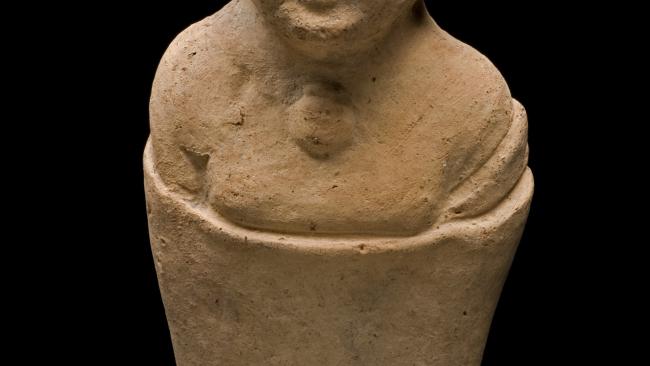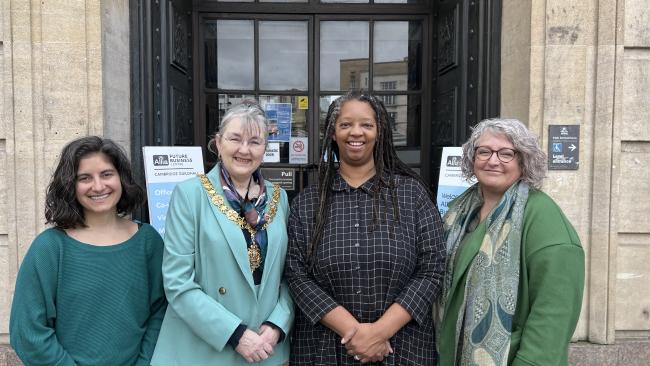
Reproduction from Hippocrates to IVF
A new book is the first to encompass the vast history of how living things procreate, from the banks of the ancient Nile to the fertility clinics of today.
Co-edited by three University of Cambridge academics, including College Fellow Dr Rebecca Flemming, this first book to take in 3,000 years of baby-making shows how women functioned as “vessels” in early ideas of creation, until the ancient Greeks established theories of “dual contribution” – whether two seeds or two souls – that dominated beliefs about how everything multiplied for centuries to come.
This notion of “generation”, when two individuals combine to produce new life, was understood as an “active making of humans, beasts, plants and even minerals”. Likened to artisanal processes such as baking and brewing, say researchers, it shaped cultural and religious doctrine right up to the 19th century.
From the 1740s, new science promoted a fresh concept: reproduction. The book’s authors show how this more abstract view gave us the sperm and egg, “test-tube” conception outside bodies, and all the language and ethical dilemmas we live with today – from population anxieties to surrogate mothers.
Published by Cambridge University Press, Reproduction: Antiquity to the Present Day is the first major synthesis of decades of scholarship comprising millennia of human attempts to make (and not make) more of ourselves, other animals and plants.
Pooling the expertise of historians from across Cambridge and around the world, the book is the culmination of a five-year project funded by the Wellcome Trust.
“When we talk about major issues facing global society today, from climate change and migration to childcare and medical ethics, then to a large extent we are talking about reproduction: how it happens and how it should,” says Professor Nick Hopwood, from Cambridge’s Department of History and Philosophy of Science.
“Reproduction has always been important, but in different ways. To provide a long-term perspective, we wanted to look deep into the history of reproductive practices and beliefs.”
Hopwood co-edited the book with colleagues Professor Lauren Kassell and Dr Rebecca Flemming. Over its 44 chapters and 40 ‘exhibits’, the lavishly illustrated volume features contributions from nearly 70 leading researchers.
Flemming, from Cambridge’s Faculty of Classics, directs the first section, which takes the reader from antiquity to the early middle ages, and tells the story of the “invention of generation”.
“The framework of ‘generation’ produced in classical Greece gave important, if unequal, roles to both women and men. This contrasted with the exclusive emphasis on masculine potency creating life and the cosmos that dominated Egypt and the ancient Near East,” says Flemming.
Women and procreation became an integral part of the thriving Greek medicine – the “Hippocratic gynaecology” – of the fifth and fourth centuries BC. Female “seed” and blood provided vital contributions, and the child “grew like rising bread dough” in the womb. Cures for infertility and instructions for safe birthing were prominent.
Philosophers including Aristotle grappled with “coming to be” in all its manifestations, along with the ideal population size for a state and how to achieve it, while farmers applied burgeoning livestock techniques.
As different areas of the Mediterranean world converged, so too did ideas of generation. Greece gave way to Rome, and, according to Flemming, “the imperial metropolis of the second century AD was where the physician Galen put seeds, womb and menstrual blood into their most influential arrangement”. This would hold through the religious and political changes of the next centuries.
Societies were still highly patriarchal, however. Romans mapped male physiology onto female bodies, says Flemming: ovaries were women’s testicles, the uterus was a deflated scrotum and a weak female ‘sperma’ was designed to lock in male seed. “Women were viewed as inferior versions of men due to their apparent ‘mutilations’ for accommodating babies.”
Lauren Kassell of Cambridge’s Department of History and Philosophy of Science oversees the medieval and early modern periods, when theories of ‘generation’ expanded. Scientific inquiry was applied to distant lands and microscopic structures, and women and artisans joined in debates.
“Numerous Greek works were translated into Arabic from the eighth century. Scholars from Asia and Egypt reworked theories about the importance of the female seed and the formation of the fetus – challenging older authorities,” says Kassell.
Following the devastation of the Black Death, Christian clergy were instructed to counsel parishioners about sex to encourage “fruitful marriages”. Influenced by sex-positive attitudes from Arabic texts, church law supported spousal obligations to “honour each other’s desire for sexual gratification”.
Lineage, paramount to social order, was threatened by women having children outside marriage, although men were free to do so – with theories of family resemblance invoked in cases of disputed paternity. While unwed women feared pregnancy, Kassell says that moral and medical advisors continued to be more interested in promoting rather than limiting fertility.
“Questions about pregnancy defined early modern medical encounters. Seventeenth-century medical casebooks reveal diagnostic approaches for female fertility that are superficially familiar to modern readers, such as observing changes to a woman’s body and examining her urine, as well as the more otherworldly interpretations of the positions of the stars.”
Within households, fertility was the business of men as well as women. Some husbands charted their wives’ menstruation cycles. The book features diary sections written by the mathematician and occult philosopher John Dee, in which he recorded his wife Jane’s periods alongside notes about meetings with Elizabeth I.
Hopwood guides readers into the era of ‘reproduction’: a long revolution not just in society and culture, thought and technology, but also in terminology. The word is older, but its modern use began in earnest in the 1740s, when experiments to regenerate tiny freshwater animals after cutting or sieving provided a model for reproduction in general.
It was not until the 1870s, however, that a scientific consensus emerged on the roles of eggs and sperm in fertilization. (In 1827, the same year he discovered the mammalian egg, embryologist Karl Ernst von Baer named ‘spermatozoa’ but dismissed them as parasites.)
“As European birth-rates fell, reproduction became linked to worries about the quality as well as the quantity of populations, including nationalist fantasies of racial vigour,” says Hopwood. These would result in some of humanity’s darkest hours.
People in industrialized countries increasingly limited the size of their families in the early 20thcentury, while governments initially fought contraception and abortion. Some worried that state control of reproduction would lead doctors to create humans “as farmers breed their beasts”. Others were more concerned that maternal mortality stayed stubbornly high.
As reproduction moved centre stage after World War II, science and medicine took ever more important roles in childbirth (now safer), contraception (now respectable), and attempts to alleviate infertility. Feminist activists campaigned against “battery births” and for “a woman’s right to choose”. Environmentalists promoted population control.
Hopwood contributes a chapter on the strange history of artificial fertilization, taking in horse-semen thieves,test-tube sea urchins, experiments to produce human-orangutan hybrids, and fertility magnates promising Nobel Laureate sperm. More routinely, over five million IVF babies have now been born around the world, though assisted conception is provided through the market more than by states.
The book closes with contemporary phenomena, from egg freezing and “repro-travel” to food security and infant mortality, and the media debates that shape attitudes towards them. “Today, reproduction happens on screens as well as in bedrooms, clinics and barns,” says Hopwood.
The editors hope the book’s extraordinary chronological range will give readers new insights into the past and prompt reflection on current challenges. “Long views reveal continuities we miss by focusing on a mere century or two, but the very similarities direct attention to the specifics of change,” Hopwood adds.
This article first appeared on the University of Cambridge website and is shared under a Creative Commons Attribution 4.0 International License





